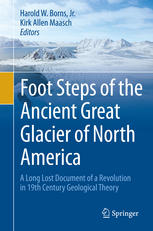

Most ebook files are in PDF format, so you can easily read them using various software such as Foxit Reader or directly on the Google Chrome browser.
Some ebook files are released by publishers in other formats such as .awz, .mobi, .epub, .fb2, etc. You may need to install specific software to read these formats on mobile/PC, such as Calibre.
Please read the tutorial at this link: https://ebookbell.com/faq
We offer FREE conversion to the popular formats you request; however, this may take some time. Therefore, right after payment, please email us, and we will try to provide the service as quickly as possible.
For some exceptional file formats or broken links (if any), please refrain from opening any disputes. Instead, email us first, and we will try to assist within a maximum of 6 hours.
EbookBell Team

4.8
94 reviewsJohn K. DeLaski, M.D. practiced medicine in the Penobscot Bay region of Maine and, in addition, was a naturalist with keen powers of observation. His study of the landscape led to the conclusion that a thick glacier had overtopped the highest hills, flooded all of Penobscot Bay, extended far to the east and west and probably was part of a greater continental glacier. He published these very critical field observations and inferences in numerous articles in local newspapers and magazines, and in the American Journal of Science in 1864. His work put him on the “team” of Benjamin Silliman, James D. Dana and Louis Agassiz as an advocate for glaciation as the regional land shaping force opposed to that of the Biblical Deluge, a major scientific conflict of the day both in North America and Europe. He remained a shadowy player, in the background, but clearly contributed critical observations to the argument through personal interactions with Agassiz and other prominent naturalists. They incorporated DeLaski’s observations into their own presentations, often without giving him credit. John DeLaski’s summary work, a 400 page handwritten manuscript for the book, “The Ancient Great Glacier of North America”, was dated 1869. He died in 1874 and the book was not published. The historic significance of DeLaski’s unpublished book is based upon its startling contribution to one of the major scientific questions of the day of whether the surficial geology of northern U.S. and Canada was caused by the actions of the Biblical Flood or by continental glaciation. If published, this would have been the first book on this continent, at least, to present a holistic discussion of the controversy in which he presented his critical observations of the surficial geology in Maine, southern New England and New Brunswick, Canada and concluded that these depositional and erosional features must be of glacial origin. DeLaski then incorporated other evidence into the book for glaciation reported by others from the region during a decade or two, and from the mid and far west and Canada to advocate that the entire region was covered by an ice sheet that was at least 5,000 feet and probably much thicker over interior northern U.S. and Canada and which terminated along a glacial margin which extended from southern new England as far westward along the courses of the Ohio, and Missouri Rivers. All this was done while most “naturalists” still advocated the Biblical Flood to explain the major components of the surficial geology in North America and abroad. DeLaski’s book containing his critical observations of clearly so many landscape features of glacial origin, if published would have been a pivotal document that would have strongly supported those arguing for glaciations in the glaciations vs. flood international argument.